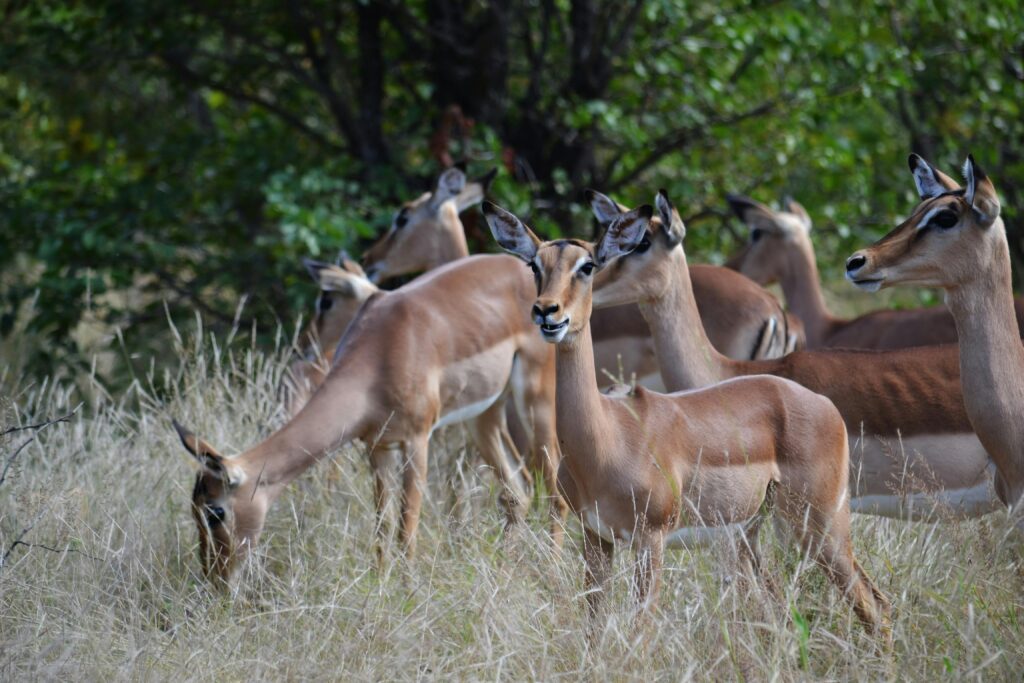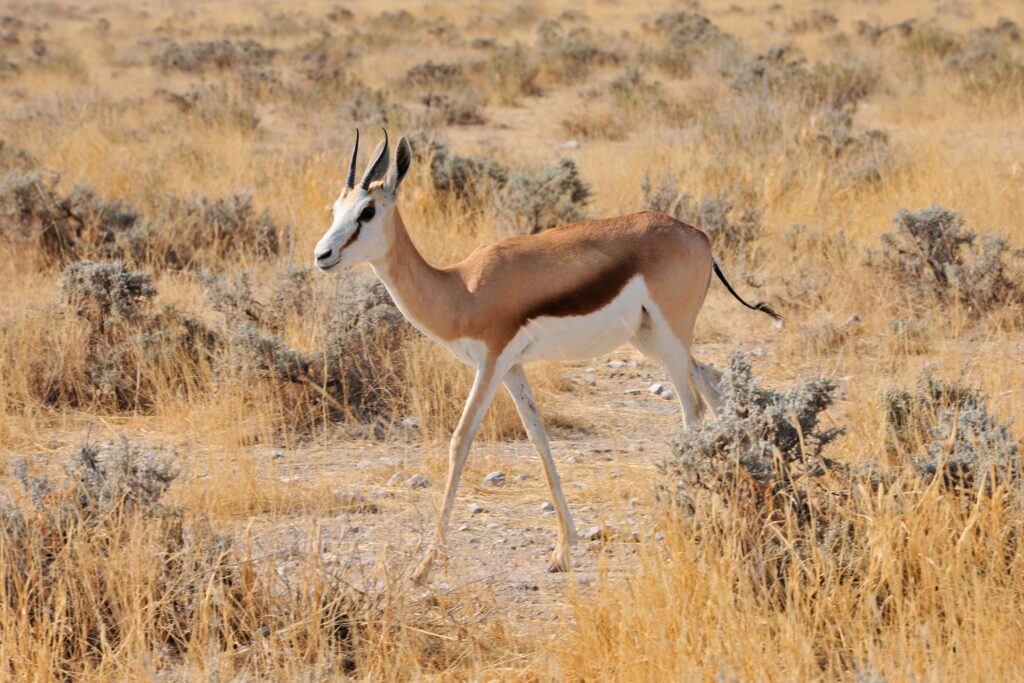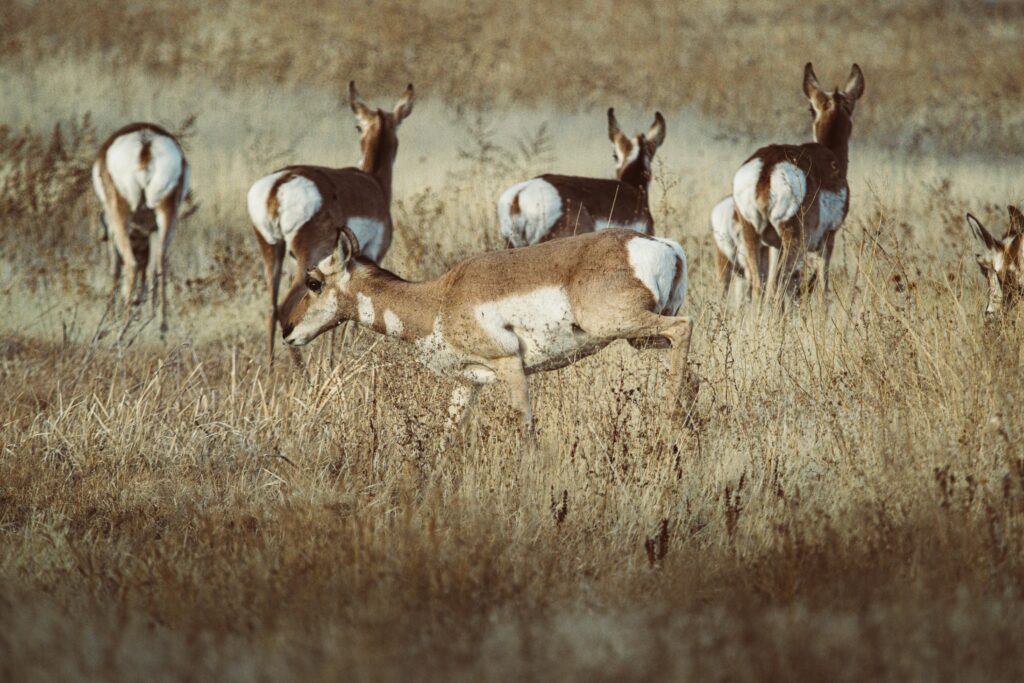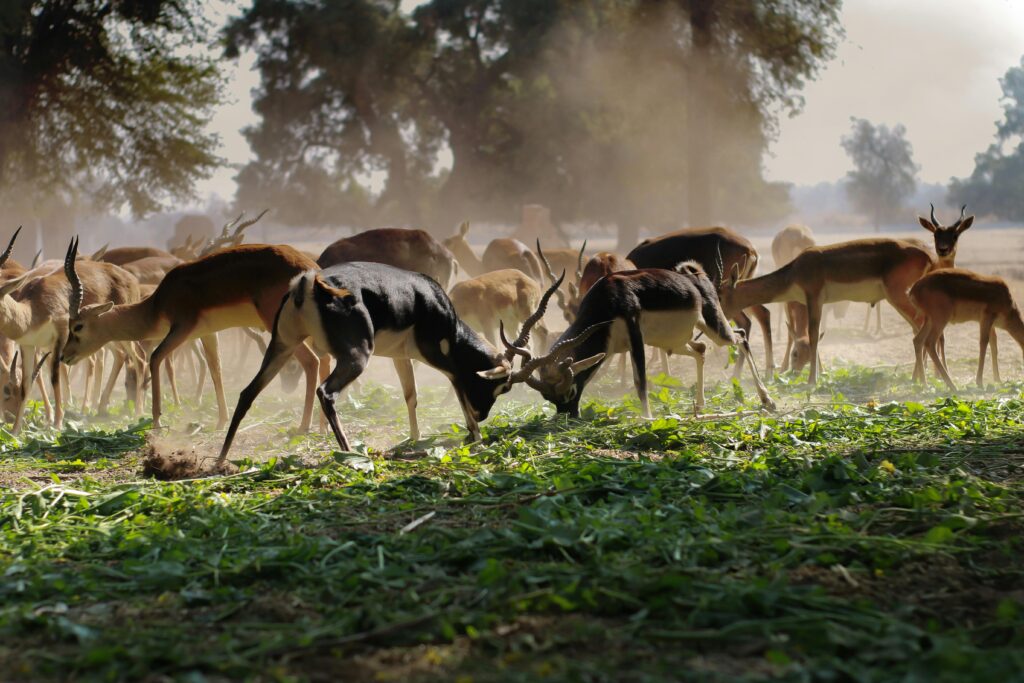Antelopes are among the most iconic and fascinating animals in the world. Known for their grace, agility, and striking horns, these herbivores are essential players in the ecosystems they inhabit, from Africa’s vast savannas to the open plains of North America. With over 90 species, antelopes vary dramatically in size, shape, and behavior, yet all share one thing in common: their incredible ability to evade predators with speed and dexterity. In this article, we’ll take an in-depth look at antelopes, exploring their characteristics, behavior, ecological importance, and the conservation challenges they face.
1. What Are Antelopes?
Antelopes are members of the Bovidae family, which also includes cattle, goats, and sheep. Unlike true deer, antelope species have unbranched horns made of keratin, which continue to grow throughout their lives. They are found in a wide range of habitats, from the dry deserts of southern Africa to the high-altitude grasslands of the Himalayas. While the majority of antelopes live in Africa, a few species, like the pronghorn, are native to North America.
Some of the most well-known species of antelope include:
Thomson’s Gazelle
This small and agile species is often seen in large herds across East Africa’s savannas. With its slender body and quick reflexes, the Thomson’s gazelle is one of the most iconic and well-recognized antelopes.

Springbok
Springbok Known for their incredible leaping ability, springboks are a symbol of southern Africa’s wildlife and are often seen in the vast, arid landscapes of South Africa and Namibia.

Kudu
Kudu with their striking long, twisted horns and large size, kudus are among the most visually impressive antelopes. Found primarily in southern and eastern Africa, they are known for their secretive nature and preference for dense forests.

Impala
These medium-sized antelopes are highly social and often form large mixed-species herds in the savannas of sub-Saharan Africa. Impalas are known for their agility and ability to leap high over obstacles when fleeing predators.

Pronghorn
Pronghorn while not technically an “antelope” by taxonomic standards, the pronghorn is often called an antelope in North America. This species is particularly unique because it evolved separately from the true antelopes found in Africa and Asia, and is capable of running at incredible speeds, outpacing many predators.

2. Physical Characteristics
While antelopes exhibit a wide range of physical characteristics, they share several common traits that help them thrive in their habitats:
- Horns: One of the most defining features of antelopes is their horns, which are made of keratin (the same material found in human hair and nails). Unlike deer, whose antlers are shed annually, antelope horns are permanent and grow throughout the animal’s life. The horns of antelopes can vary greatly in size, shape, and structure, depending on the species. For example, the kudu has long, spiral horns, while the impala sports shorter, curved ones.
- Body Shape: Most antelopes have slender, athletic bodies designed for speed. Their long legs and aerodynamic shape make them exceptionally fast runners, capable of reaching speeds of up to 60 miles per hour (97 km/h) in some species like the pronghorn. Their body structure allows them to cover large distances quickly, making it easier to escape predators.
- Coats and Colors: Antelopes are known for their diverse coat colors, which often serve as camouflage. Species like the impala have reddish-brown coats with white underparts, while the oryx displays dramatic black and white markings on its face and body, helping it blend into its desert surroundings. These coats also help regulate their body temperature, with many species having light-colored coats to reflect the heat of the midday sun.
3. Behavior and Social Structure
Antelopes display a wide variety of social structures, ranging from solitary to highly social, depending on the species. Their behavior is often linked to the need for protection from predators, food availability, and mating systems:
- Herds and Flocking: Many antelope species, such as Thomson’s gazelles and impalas, form large herds that provide safety in numbers. Herds can range in size from a few dozen to several hundred individuals. These groups are usually led by dominant males, and females often form smaller subgroups based on age and social status. Springboks, for example, form large herds during the wet season and disperse during the dry season when food is less abundant.
- Dominance and Mating Rituals: In some species, such as the kudu and eland, males establish dominance through physical contests, where they use their horns to fight for mating rights. These contests can be fierce and often involve pushing and wrestling to display strength and stamina. Males may also engage in vocalizations, scent marking, and other displays to attract females. In some species, such as the impala, males may form temporary bachelor groups and compete for females during mating seasons.
- Communication: Antelopes communicate through a combination of vocalizations, body language, and scent-marking. Alarm calls are common when predators are spotted, with some species, such as the impala, using a distinctive “bark” to warn others of approaching danger. Raised tails are another common signaling behavior, alerting the herd to potential threats.
- Migratory Behavior: Some antelope species, such as the wildebeest (a type of antelope), participate in large-scale migrations across the African plains, traveling great distances in search of food and water. Similarly, the pronghornin North America migrates seasonally, adjusting its movements to take advantage of different food sources and climate conditions.
4. Diet and Feeding Habits
As herbivores, antelopes primarily feed on grasses, shrubs, leaves, and fruits, depending on the species and the environment in which they live:
- Grass Grazers: Species like the gazelle and impala are primarily grazers, feeding on fresh, tender grasses. These species tend to inhabit grasslands, savannas, and open plains where grasses are abundant. Grazing allows them to maintain their fast metabolism and helps them sustain the energy needed for evading predators.
- Browsers: Other species, like the kudu and eland, are browsers. They feed on shrubs, leaves, and woody plants, which they reach by using their long necks and agile mouths. Browsing species are often found in more wooded or arid environments where grasses may be scarce, and their diet helps control the growth of shrubs and trees.
- Water and Food Sources: Most antelopes require access to water for drinking, although some species, like the oryx, are adapted to survive in arid environments and can go for extended periods without drinking, obtaining moisture from plants. The availability of water often influences the movement and migration patterns of antelope species.
5. Speed and Agility: Antelope’s Defense Mechanisms
Antelopes are known for their remarkable speed, agility, and leaping abilities, which they use to avoid predators:
- Running Speed: Some species of antelope, like the pronghorn, can run at speeds of up to 60 miles per hour (97 km/h), making them one of the fastest land animals on Earth. The cheetah is the only predator capable of outrunning them. Antelopes rely on their speed to evade predators like lions, cheetahs, and hyenas.
- Agility and Leaping: In addition to speed, antelopes are incredibly agile. Species like the springbok are known for their extraordinary leaping ability, capable of performing high, repeated jumps called “pronking.” This behavior is thought to confuse or alarm predators, making it harder for them to predict the antelope’s next move.
- Camouflage: Some antelopes, such as the oryx and kudu, rely on their natural coloration to blend into their environments. The kudu, for example, uses its vertical striping to merge into the shadowy underbrush, while the oryx’s black-and-white markings help it hide in desert landscapes.
6. Ecological Importance of Antelopes
Antelopes are essential to the ecosystems in which they live. As herbivores, they play an important role in shaping the landscape:
- Grazing and Browsing: Antelopes help control the growth of grasses, shrubs, and trees. This grazing and browsing behavior prevents overgrowth, creating a balanced ecosystem. In savannas and grasslands, antelope grazing helps maintain open areas that other species rely on.
- Supporting Predator Populations: As prey species, antelopes are a primary food source for large predators, including lions, leopards, and cheetahs. The presence of antelopes in an ecosystem helps sustain healthy predator populations, which in turn maintains the balance of herbivore numbers.
- Seed Dispersal: Some species of antelope, like the impala and gazelle, contribute to seed dispersal by eating fruits and plants and passing the seeds through their digestive systems. This helps ensure the regeneration of plants and promotes biodiversity in the environment.
7. Conservation Challenges and Efforts
Despite their ecological importance, antelopes face numerous threats:
- Habitat Loss: Rapid urbanization, agricultural expansion, and deforestation are causing the destruction of natural habitats. As human populations grow, antelopes are increasingly pushed out of their traditional ranges, which leads to population fragmentation.
- Poaching: Antelopes are often hunted for their meat, hides, and horns. Species like the bushbuck and impala are particularly vulnerable to poaching, which can cause significant declines in their populations.
- Climate Change: Changes in rainfall patterns, prolonged droughts, and desertification are making it more difficult for antelopes to find food and water. These environmental shifts can lead to reduced reproductive success and increased mortality rates.
Efforts to conserve antelope populations are being undertaken worldwide. Protected areas, anti-poaching laws, and habitat restoration initiatives are crucial in the fight to preserve these animals. In addition, local communities are increasingly involved in wildlife conservation, ensuring sustainable cohabitation between people and wildlife.
8. Conclusion: The Future of Antelopes
Antelopes are not just beautiful creatures; they are critical to the health of their ecosystems. From shaping the landscape through grazing to supporting predator populations and aiding in seed dispersal, antelopes play many vital roles. However, due to habitat loss, poaching, and the impacts of climate change, many species are at risk of extinction.
Protecting these animals requires collective action—through habitat conservation, sustainable land practices, and anti-poaching measures. As we continue to learn about antelope behaviors, their habitats, and the threats they face, we must also consider how we, as stewards of the Earth, can contribute to their preservation. With concerted effort and global collaboration, there is hope for the future of antelopes, ensuring that these graceful and important animals continue to thrive for generations to come.
By understanding and supporting antelope conservation, we not only safeguard these species but also help maintain the biodiversity and ecological balance of the environments they inhabit. The graceful antelope is more than just a symbol of wildlife; it is a vital part of our planet’s natural heritage.



